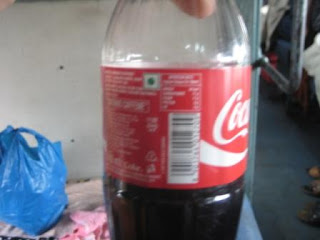I have been in India for two full weeks now and have come to learn many things about its culture. One aspect of Indian culture that differs greatly from American culture is the ability to be efficient. I wouldn't say that the U.S. is overly efficient, but the amount of bureaucracy and time required to complete simple tasks in India is astounding. A la David Letterman, here are ten situations I have encountered that exemplify my point.
10). Certain things in India operate on weird schedules. For example, banks run on the 9-5 schedule, but are typically closed for three hours in the afternoon. Similarly, the outdoor pool is closed from 1-4pm, arguably the peak time of day.
9). Despite English being one of India's official languages, most people in service jobs (i.e. taxi drivers, waiters, hotel staff) know nothing but a few words.
8). Lines, or queues, do not exist in India. Whether at the airport or the library at school, Indians automatically ignore anybody else who is waiting and go directly to the front.
7). The price listed or quoted for an item is not the actual price. Everything has to be negotiated for and bargained. For example, in Jaipur, a pair of pants was quoted at 1,250 rupees (about $25). The final price paid was 200 rupees, or about $4. This phenomenon applies beyond retail businesses.
6). If you are on an elevator or train, expect Indians to push their way on before you get off. As illogical as this may seem, that's just how it is.
5). Upon arriving at school, I had the IT Department configure my laptop so I would be able to use email and internet. After going to IT four times, I still cannot print or turn in my assignments online. Additionally, I have to use three different web browsers - Explorer for anything ISB related, Firefox for normal browsing and Chrome for anything Google related, such as Gmail.
4). Students are required to register with the local police department. This process, which includes a really long form, photographs, copies and a two hour wait at the police station is necessary to avoid a hassle when leaving the country. Apparently my visa and other travel documentation didn't take care of that. I wouldn't be surprised if they ask for a blood sample as well.
3). Bathroom tissue (the PC name for TP) is not used in much of India. Instead, all bathrooms have a short hose with a spray nozzle attached next to the toilet. I'm not sure how it works, but it seems like it might be like a ghetto bidet of some sort. Needless to say, but trying to purchase bathroom tissue turned out to be quite the quest for Woodson and I - but a successful one.
2). The cafeteria at school has meat - one dish per day - but it is under lock and key. After initially signing in at the cafeteria, to procure chicken, you have to walk over to the far side of the kitchen, where a man stands guard in front of the meat "safe" - literally a locked oven. The man makes you sign a sheet, complete with your name, address and student identification number and then he himself signs it before providing the poultry.
1). When attempting to purchase a prepaid cell phone, significant documentation is required. It required two trips to the cell phone store, a trip to the copy shop and arguing with the very sketchy cell phone dealer. He claimed that my American-issued passport was a phony and that the visa issued by his government wasn't real. I never thought I would be called out as a questionable character by somebody who runs a cash-only cell phone shop in India.
I am enjoying India, but it is definitely teaching me to be patient.


























